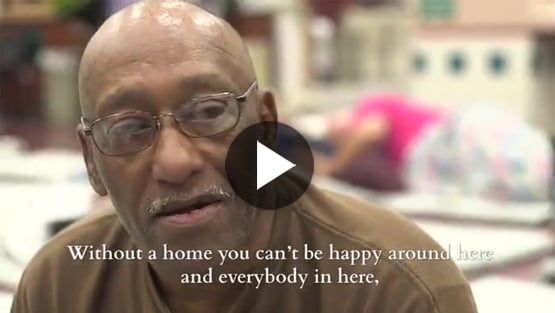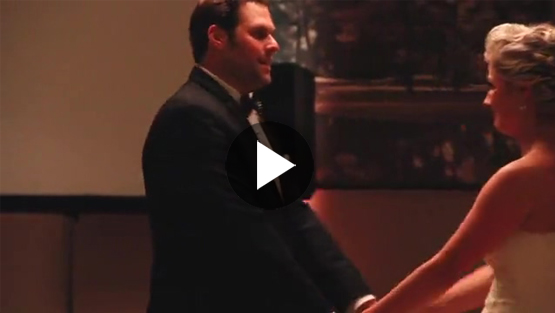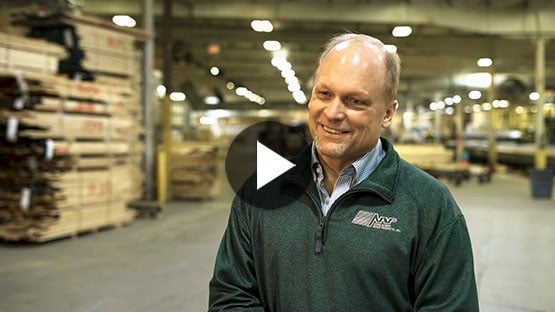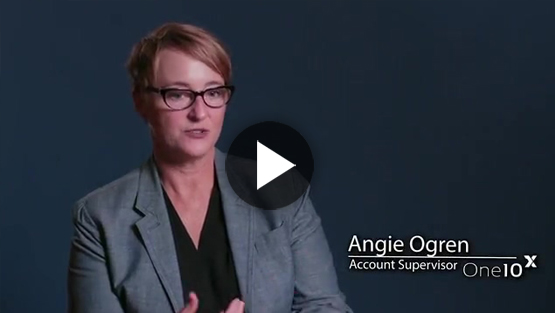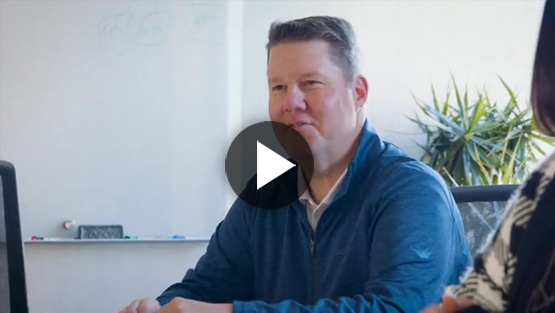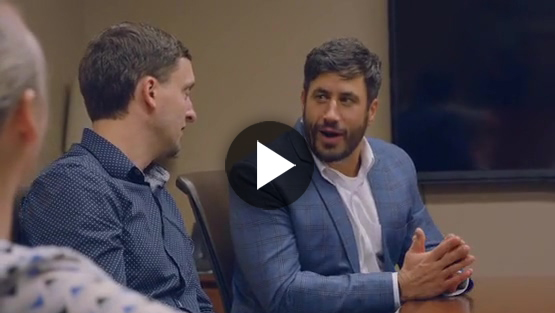Storytelling is the key to a great video. Videos take people to places and show them aspects of your work they haven't seen before—but they’ll only watch if the story is compelling.
Since launching StoryTeller back in 2005, we’ve used our foundations in television news and journalism to help companies reach target customers through compelling video storytelling.
In TV news, you learn to focus on who your audience is—whether that’s a certain demographic or metro area or persona-type based on the time of day of the newscast. Certain types of stories are more interesting to certain audiences (i.e. weather and traffic reports are in morning newscasts for people getting ready for the day). This holds true when it comes to storytelling for businesses, whether you’re a CFO or a scientist.
There are several important storytelling concepts presented here that you need to consider for your corporate video production to be a success.

Create Corporate Videos They’ll Remember

Provide Value By Focusing On Solutions

Establish a Viewer Connection

Follow the Elements of Storytelling

Drive Results Strategically

Conclusion: The Best Storytellers are Truth-Tellers
Create Corporate Videos They’ll Remember
Storytelling Not Storyselling
Narrowing in and honing in on stories can be a challenge for many businesses. Even people trained as marketers may not be trained as “brand storytellers.” As a result, too often corporate videos lean toward appearing as advertisements or commercials, marketing your messages to people rather than actually creating a compelling story that resonates with them.
Videos that feel like ads get skipped. Telling someone to do something in a video rarely works. Inspiring someone with the story that draws them into a video is much more likely to get them to take an action.
Inspiring someone with the story that draws them into a video is much more likely to get them to take an action.
Understand Your Audience
When it comes to telling a great story, you first need to understand your intended audience, and then ask, “How can a video help them?”
A lot of times businesses get tripped up by trying to make an assertion, “This is what's really important to me.” Rather than saying, “What do I do that's really helping our customers or our prospects?” or “What information do they value and what will resonate?” Remember that ultimately, when you produce a video for your business, it's not usually what people do or say that your audience will remember, it's how you make them feel. Have a brainstorming session with key members of your team to generate ideas. Be sure to invite people who work closest to the customers, which is often your sales team.
“What information do they value and what will resonate?”
Let Your Customer Be the Hero, Not You
We all consider ourselves the hero in our own story. A person doesn’t want to watch a video where your company is the hero. They will watch a video about how your company removes obstacles they face, so they can be even more heroic in their own story.
“When we position our customer as the hero and ourselves as their guide, we will be recognized as a sought-after character to help them along their journey,” said Donald Miller, CEO of StoryBrand.
Miller’s assertion is built on the understanding that we want to build trust with customers so that we can better serve them. According to the Edelman Trust Barometer, brand trust ranks among the top five buying considerations when today's consumers make purchases. Would you let someone guide you, anywhere, without trusting them? Probably not. So, developing this brand trust is an important part of ensuring your messaging will resonate.
Provide Value By Focusing On Solutions
Keep it Personal
Too often, companies and organizations want to hammer on messaging about external problems. But really, this often zooms right over people’s heads. Don’t offer solutions or wax on about external factors; instead, showcase how your business or organization provides customers with solutions to their internal problems.
For example, many banks create marketing materials around their long-standing history and their interest rates compared to other banks. Then, they wonder why they have difficulty differentiating themselves, without realizing that these offerings have nothing to do with their customers. Customers care about what money provides: a sense of security, the ability to travel, buy fancy gelato, the list goes on. In short, your message should explain how your brand will help your customer get where they want to be.
This is another time when your target personas will prove useful. Use your understanding and insights about your audiences to solve their personal problems. Ask yourself, “What does my customer desire?” “Where are they trying to go?”
Become a Trusted Guide with a Plan
As established above, your business or organization is not the hero of this storytelling journey; instead, you are Skywalker’s Yoda, Harry Potter’s Dumbledore, George Banks’ Mary Poppins, Frodo’s Gandalf (okay, I know you get the point). What we’re trying to say is that every hero needs a trusted guide, and that’s where you come in. Guides come in all shapes, sizes, and personalities, and that’s where your messaging can also become uniquely tailored to showcase who you are and what you have to offer.
One key trait of a guide is to show empathy, to put yourself in the hero’s shoes, and help your hero forge a plan. Brands able to use empathetic marketing will always place their audience at the center of all of their marketing efforts.
Highlight A Dramatic Question
A good story should always contain some kind of drama. From before the amphitheaters of ancient Greece to Hollywood’s blockbuster industry of today, humans have always been drawn to emotional stories driven by an overarching dramatic question. You can use a dramatic question as an overarching thought in your video, that will hold your audience’s attention, such as:


How is this problem going to be solved?

Who can step in and fix this?
Bearing the dramatic question in mind throughout your planning will help you focus your piece.
Consider this example produced with Project for Pride in Living. The dramatic question of the piece is, “How can our characters escape cycles of challenge and underemployment?” As the piece progresses, the answers reveal themselves and create dramatic satisfaction in the viewer.
Make Your Stories Newsworthy
We also like to remind businesses that their stories should also be newsworthy. Ask yourselves the following questions to determine newsworthiness:
1.
Is it useful, unique, or interesting?
2.
Is it timely?
3.
Is it aligned with the target audience?
4.
Do we have enough information to tell this story?
5.
Is the information unbiased, authentic, and legitimate?
6.
Is this a story or just a statement?
Establish a
Viewer Connection
Highlight Emotional Stories
When Catholic Charities of Saint Paul and Minneapolis launched a capital campaign to replace an overcrowded and run-down homeless shelter, their initial impulse was to feature someone in leadership and to go into detail about the fundraising goals of the campaign. Thinking about the audience and how to connect with them—we suggested a different route.
After really thinking through the best way to tell the story and connect with donors—we realized that the best storyteller wasn’t an executive in a suit and tie—it was a client—someone facing homelessness who could tell his story, show the conditions he lived with, and break through to the donors about the need.
The campaign was a huge success and today the campus includes Dorothy Day Place, Higher Ground Saint Paul, and the Saint Paul Opportunity Center with permanent housing for more than 500 people, dignified shelter, transitional care for those leaving the hospital, and space for dedicated services to help create pathways to opportunity.
While not every business has access to such emotional stories—it illustrates the power of really thinking through who the characters are who are telling your story. Sometimes the top executives really are the right choice for a video—but sometimes you’ll do a better job of connecting with your audience by going a different route.
Focus On People-Centered Stories
This might already be obvious, but it’s so important, we’ll say it again. Don't tell stories about your building, your earnings, or anniversary stories. Your customers likely don’t care about those. When we're talking about storytelling for businesses, it’s your people—your leadership, team members, and customers you serve—who will bring your business to life.
Pro tip: In general, video stories about one person are more powerful than stories about several people. It’s easier to connect and relate to an individual than to several people at once.
Follow the Elements of Storytelling
Show, Don’t Tell What You Do
Too often, companies create videos that focus on what their business promises to do in the future, instead of showing how your business is impacting your customers today. By asking existing customers to be your advocate in a testimonial your stories will automatically be solution-focused, showcase what you do, and help you build credibility.
Provide Conflict Resolution
Emotion is a critical part of the storytelling process and a powerful way to engage with your customers and build a relationship. Entertaining, funny, contemplative, etc.—you need to understand how you want your audience to feel. Then, the second and equally important aspect is providing a resolution to the conflict that you have provided, to heighten the emotional experience.
Whether your onscreen character shares their personal grief from a lived experience, their disgust with inactivity on a social cause, or their insecurity with their place in the world, the audience empathizes and feels those feelings alongside them. As the story progresses, and grief turns to relief, disgust turns to hope, and insecurity to contentment, the audience shares in this journey as the dramatic question of the story is resolved.
Include Interesting Details
Consider, for example, adding staff profile videos, which work extremely well for professional services brands. In these businesses, your people are your most important asset—and video makes people real and creates connections even in the online world. Instead of just highlighting where so-and-so went to school, their degrees, and the trajectory of their careers, be sure to share memorable stories about that person—like about how they started teaching gymnastics at a local YWCA, traveled the country in a Volkswagen bus, or can name all the constellations in the Western Hemisphere? Those kinds of details will delight and capture your viewers.
Drive Results Strategically
Start With The End in Mind
As you are creating your video stories, make sure you think through how you’re planning to disseminate them, as that can impact how you edit and communicate the story. For example, a video you make for your website will be different from one you include in a blog, share on social media, or send via an email. The great thing about starting with the end goals in mind is that one full or half-day of video filming can often be used to create an entire library of video content.
Check out our pre-launch video checklist for ideas on how to distribute your video.
Challenge Your Audience to Act
Alright, so you’ve used all of the tips above to create your video—it’s compelling, it’s emotional, it focuses on the customer and provides them all the tools necessary on their journey, and now—what do you want them to do?
If you don’t tell your customer what step they should take next, they won’t do anything. You’ve probably heard the term “call to action” (CTA) regarding other forms of marketing, and this concept holds true in video marketing, as well. When thinking through your video’s CTA, consider a three-pronged approach: you’ve identified the problem, evoked an emotion, and now, offer the solution.
Go to my landing page?
Watch another video?
Set up a meeting with me?
Visit my products or services page?
Donate to my cause?
Keep the Story Simple
In today’s day and age, customers often feel overwhelmed with their choices of what to buy, which causes to support, where to go for a fun night out, and thousands of other decisions throughout their days. That’s why one of the greatest gifts you can provide to your customers is the gift of a simple message. Think Goldilocks and the Three Bears, not Crime and Punishment.
You might have the greatest product in the world, the best team, and unlimited resources available to share with your customers, but if they don’t understand what you’re providing, they’ll walk away. In truth, many times, customers don’t end up buying the best products or services, they buy the ones they understand.
Conclusion: The Best Storytellers are Truth-Tellers
A New Age of Corporate Video Storytelling
One of the notable qualities of this age of digital marketing and communications is the emphasis on truth and reality. The companies that are rising above the noise are those that share valuable stories that respond to the needs of their clients, customers, and communities. What's more, we as consumers care more about what's real than what is fake (ie. commercials). This is where real storytelling can play an increasingly important role in the marketing and communication of a business story.

 Don’t have time to read the whole guide?
Don’t have time to read the whole guide?